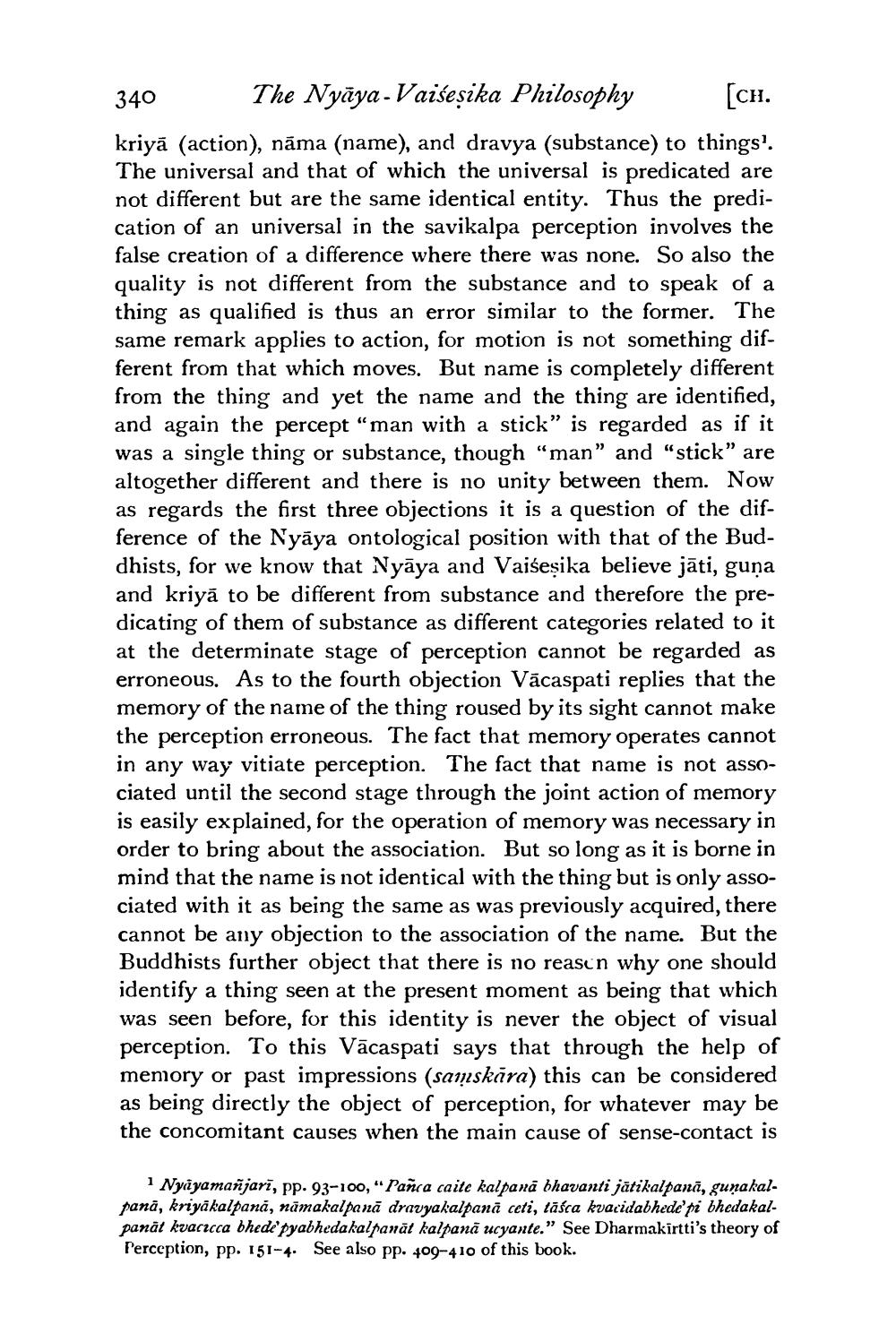________________
340 The Nyāya-Vaiseșika Philosophy [ch. kriyă (action), nāma (name), and dravya (substance) to things'. The universal and that of which the universal is predicated are not different but are the same identical entity. Thus the predication of an universal in the savikalpa perception involves the false creation of a difference where there was none. So also the quality is not different from the substance and to speak of a thing as qualified is thus an error similar to the former. The same remark applies to action, for motion is not something different from that which moves. But name is completely different from the thing and yet the name and the thing are identified, and again the percept "man with a stick” is regarded as if it was a single thing or substance, though "man" and "stick" are altogether different and there is no unity between them. Now as regards the first three objections it is a question of the difference of the Nyāya ontological position with that of the Buddhists, for we know that Nyāya and Vaiseșika believe jāti, guna and kriyā to be different from substance and therefore the predicating of them of substance as different categories related to it at the determinate stage of perception cannot be regarded as erroneous. As to the fourth objection Vācaspati replies that the memory of the name of the thing roused by its sight cannot make the perception erroneous. The fact that memory operates cannot in any way vitiate perception. The fact that name is not associated until the second stage through the joint action of memory is easily explained, for the operation of memory was necessary in order to bring about the association. But so long as it is borne in mind that the name is not identical with the thing but is only associated with it as being the same as was previously acquired, there cannot be any objection to the association of the name. But the Buddhists further object that there is no reasc n why one should identify a thing seen at the present moment as being that which was seen before, for this identity is never the object of visual perception. To this Vācaspati says that through the help of memory or past impressions (saīskāra) this can be considered as being directly the object of perception, for whatever may be the concomitant causes when the main cause of sense-contact is
Nyayamañjarī, pp. 93-100, " Pañca caite kalpanā bhavanti jātikalpanā, gunakalpanā, kriyakalpanā, nāmakalpanā dravyakalpanā ceti, tāśca kvacidabhede' pi bhedakalpanāt kvacicca bhede'pyabhedakalpanāt kalpanā ucyante." See Dharmakirtti's theory of Perception, pp. 151-4. See also pp. 409-410 of this book.




